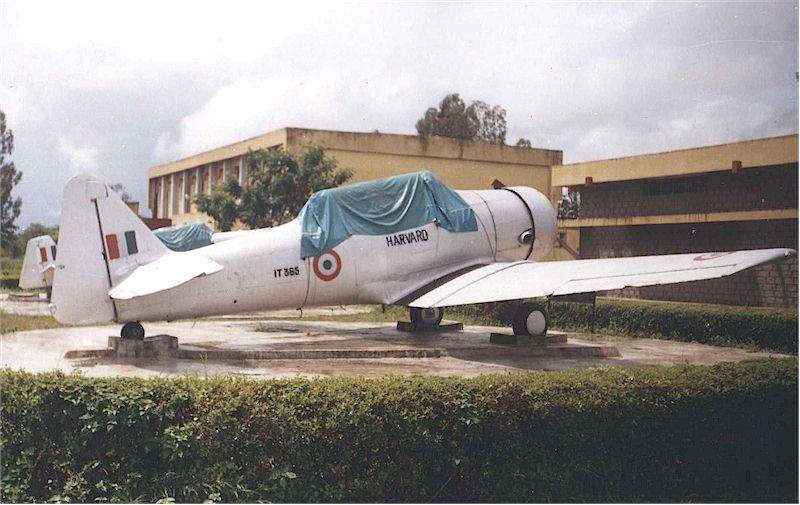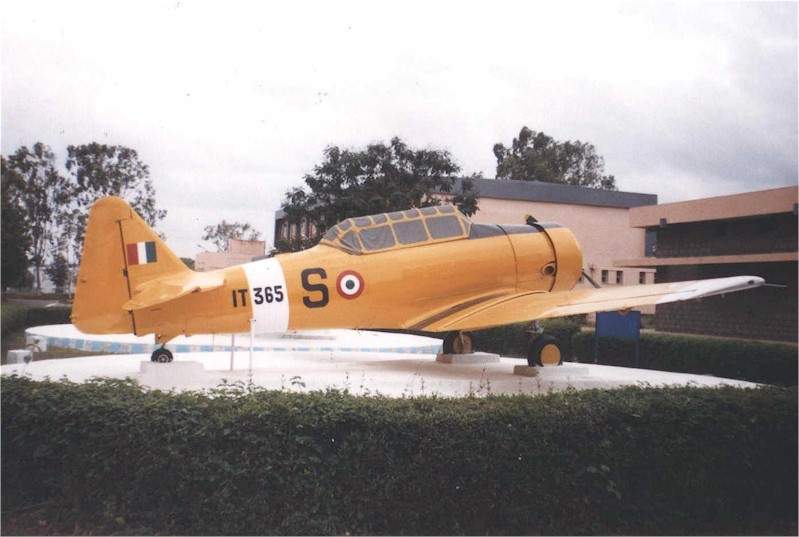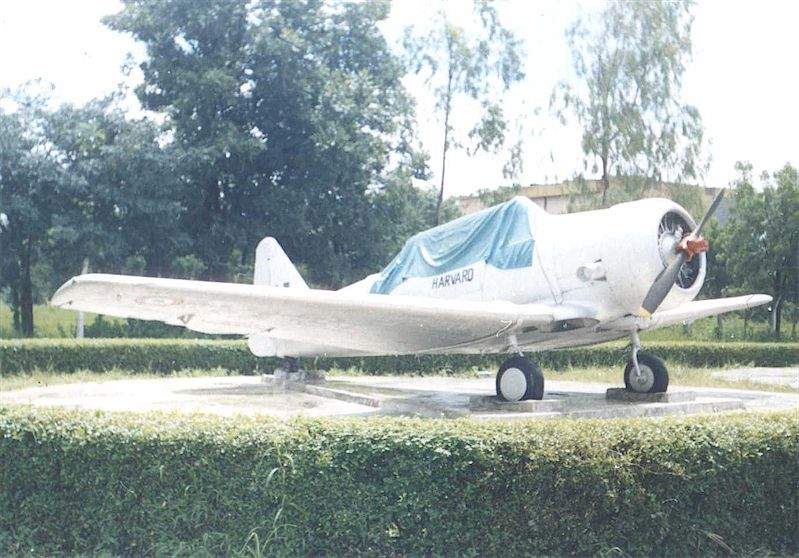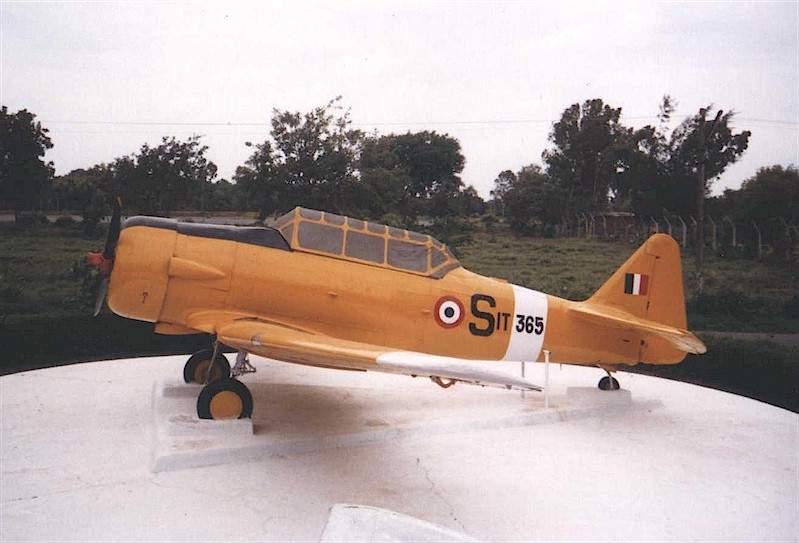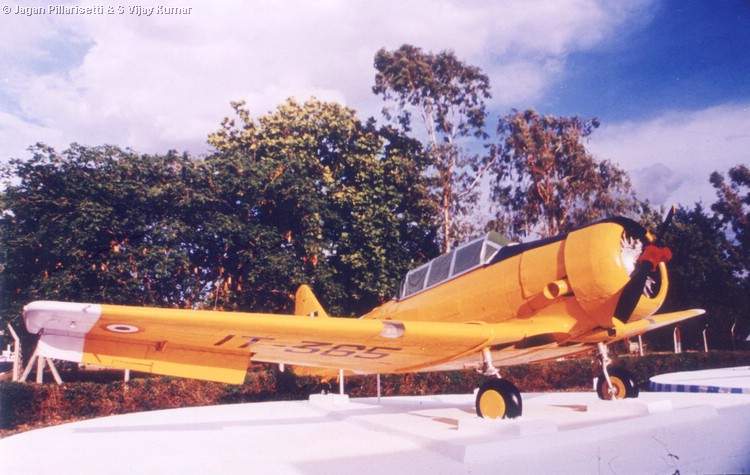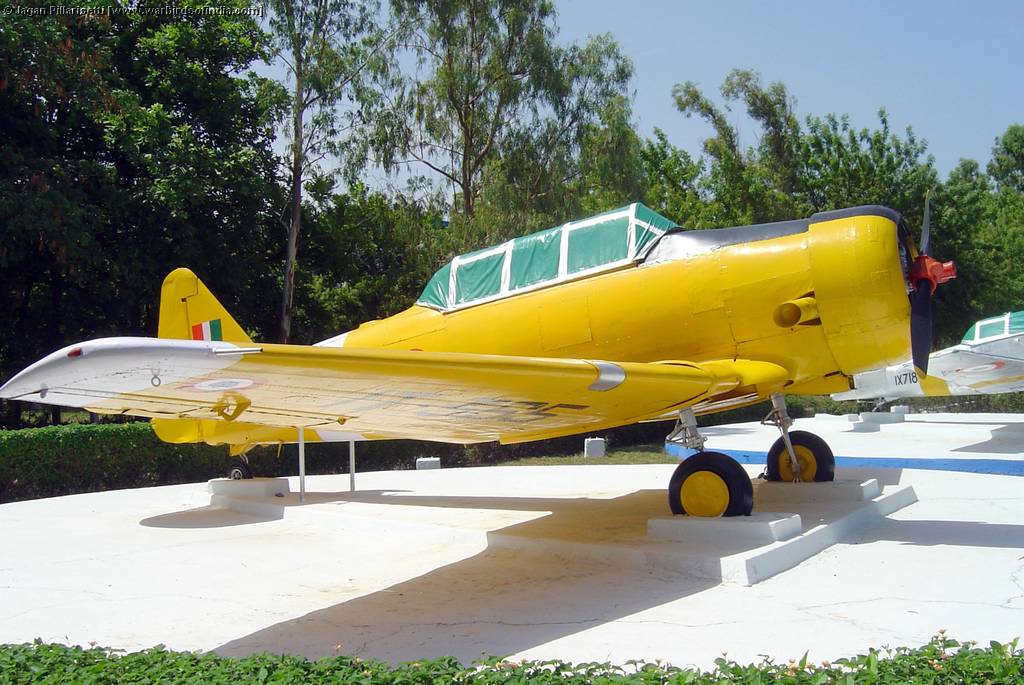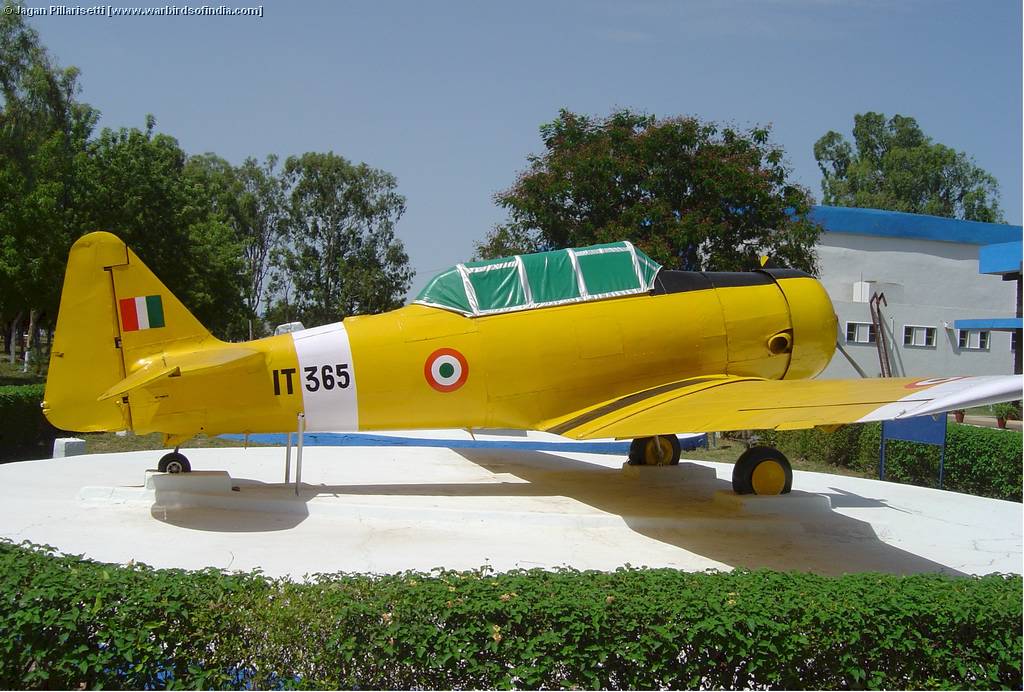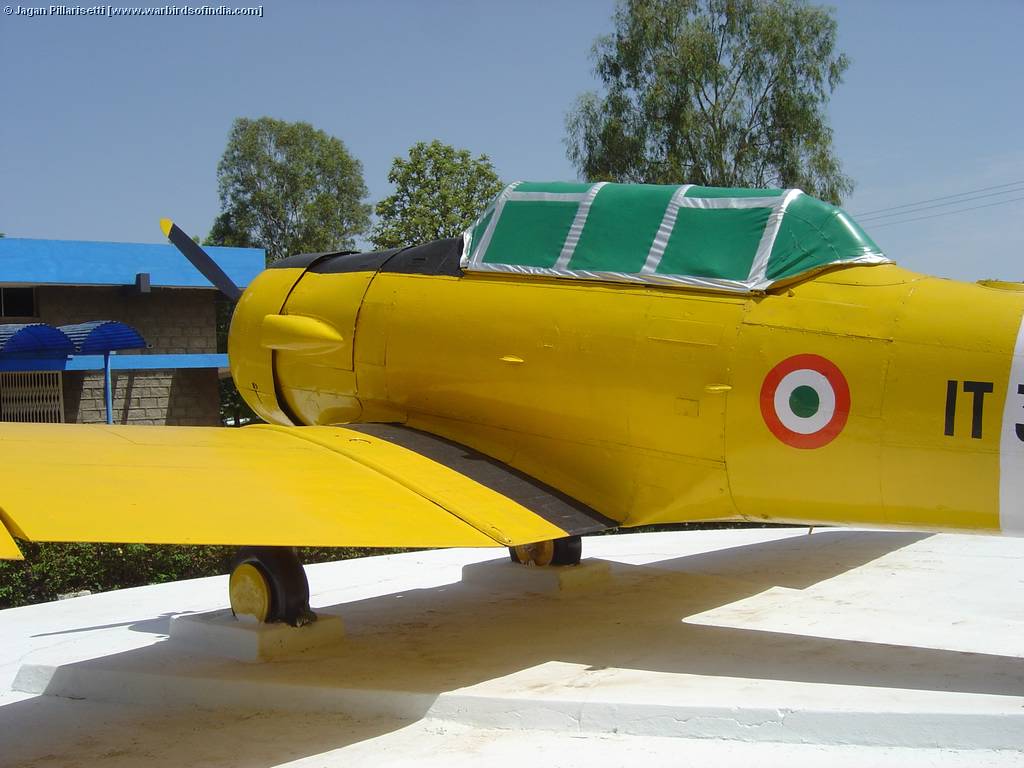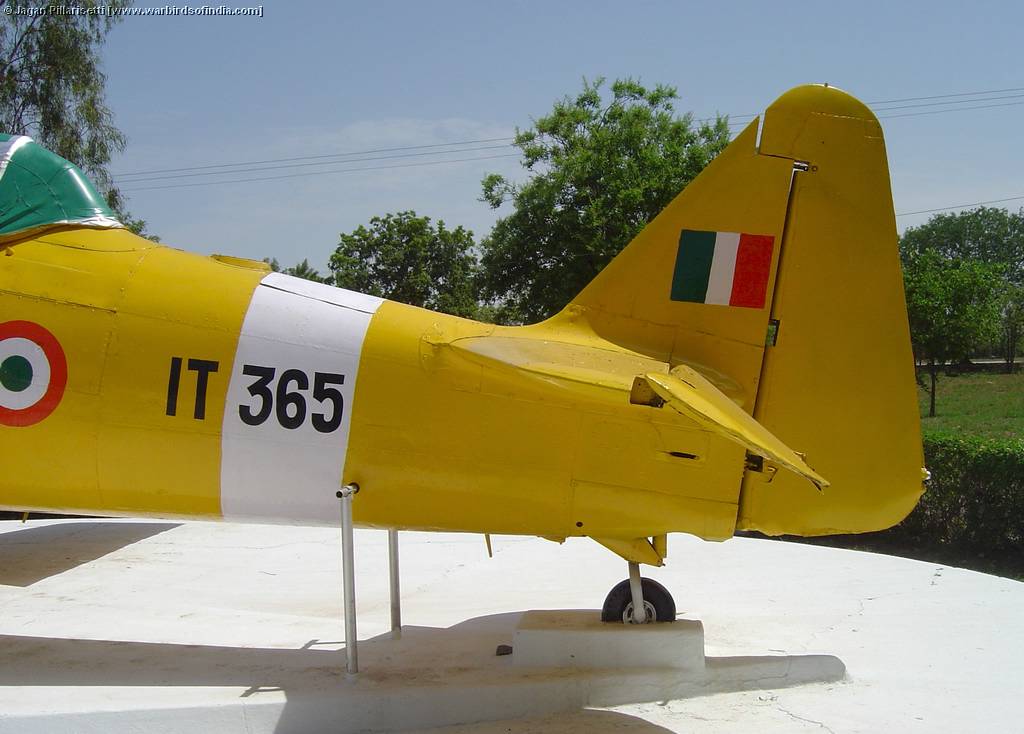The Harvard was the second oldest aircraft in the AFA’s collection. On display just outside the Museum building, this aircraft shares the space with an HAL HT-2 in front of the Museum. This Harvard [IT-365] was the first aircraft to be earmarked for the restoration effort of the Academy. The results are there for the visitor to see.
When we had visited the AFA in 1998 , The Harvard was in plain silver paint with normal markings and an unsightly tarpaulin draped over the cockpit to protect the plexiglass against UV rays as well as to prevent rainwater from seeping in. The restoration team had a pretty tough task when they set about the job of getting the Harvard to represent it in its days of glory. The job started with stripping the silver paint that has been so religiously applied in layers since years. Using a paint stripper and lots of hard work, the crew estimated that they must have stripped eight layers of paint! In fact the last layers were so tough to remove, a blow torch was used carefully to burn of the paint.
Next on the task list was to give a red-oxide coating to the aircraft before painting it in its present colors. The engine cowling was cleaned of the numerous years of accumulated dust and dried vegetation. Previously, the landing light wells had been riveted over with metal plates and painted over. Now the metal paints were removed. Plexiglas was moulded to represent the landing light covers that blended with the wing leading edge. A couple of automobile bulbs and reflectors were placed inside the landing light wells.
It was a practice to keep all the vintage aircraft covered with tarpaulins to protect them against the elements. The aircraft were left covered ninety-five percent of the time and were uncovered only during ceremonial events like visits by important dignitaries or during the Passing out Parade of the cadets. It was on the suggestion of one of the craftsmen that the restoration team devised a unique method of protecting the aircraft as well as displaying them in their complete glory. They got the tarpaulin covers stitched in the shape of the canopy, and painted to look like the cockpit canopy from a distance. This way the aircraft was protected round the year and yet the covers do little to distract from the beauty of the aircraft. The idea was duplicated with other aircraft, by and large had proved to be successful.
After a mammoth effort, the Harvard was finally completed to its pristine glory. Amazingly this was done at a cost fractional to what it would have taken to do the same in the west. The AFA had spent in the range of 800 USD to clean and repaint the aircraft. Justifiably, the Harvard today has a place of pride in the hearts of the restoration team of the Academy.
{mosmap width=’100%’|height=’300’|lat=’17.637227964807014’|lon=’78.40392529964447’|zoom=’18’|zoomType=’Large’|zoomNew=’0’|mapType=’Satellite’|showMaptype=’1’|overview=’0’|tooltip=’North American Harvard [IT365]’|marker=’1’|align=’left’}</p>‘

